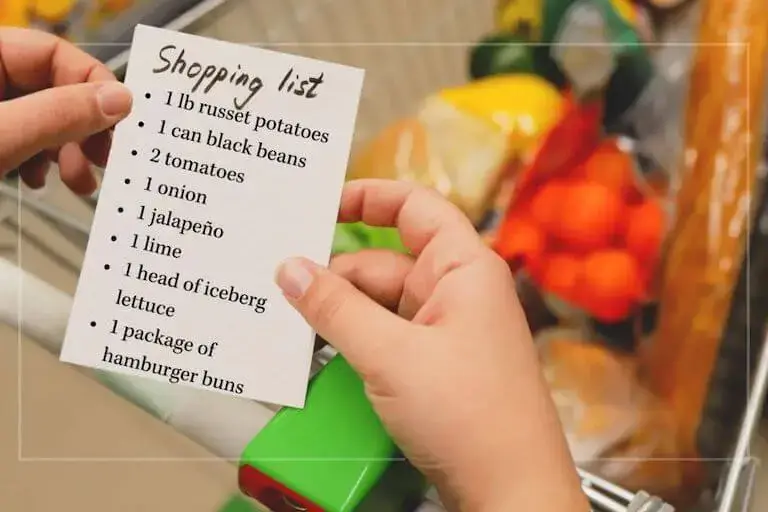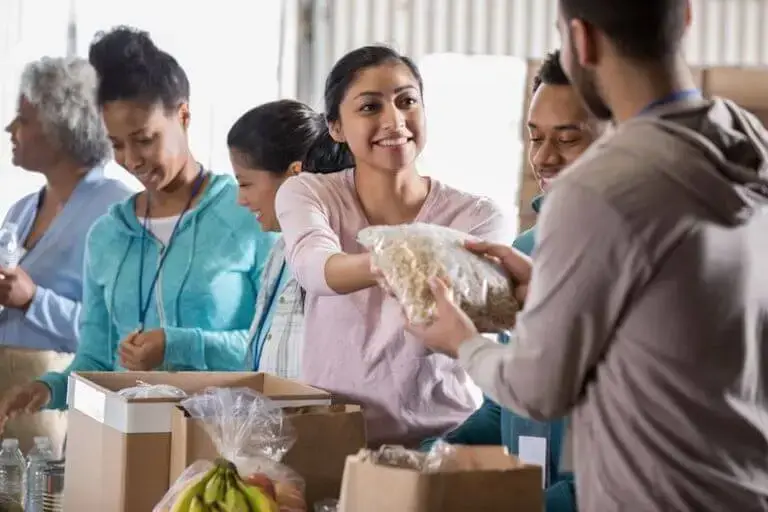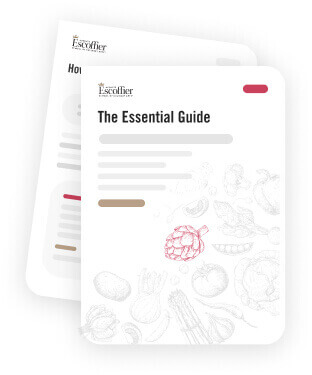Listen to This Article:
Whether you’re running a professional kitchen or cooking meals at home, food waste is something we all have the power to reduce. Every wilted herb, uneaten leftover, or forgotten expiration date adds up—not just in lost money, but in environmental impact and missed opportunities to feed those in need.
The good news? Even small changes in how we buy, store, and use food can make a real difference. Before we explore simple ways to reduce waste in the kitchen, let’s take a look at the bigger picture.
Food Waste in America: The Scope of the Problem
How much food is wasted in the U.S.? According to the USDA, between 30% and 40% of the U.S. food supply is wasted. In fact, households alone waste more than 1 billion meals worth of edible food every day, which is enough to provide 1.3 meals daily to every person in the world affected by hunger.
But the impact of food waste goes far beyond missed meals. The food we toss also contributes significantly to environmental damage, producing up to five times the amount of global greenhouse gas emissions as the aviation industry.
According to The State of Food Security and Nutrition in the World 2024, over a quarter of the world’s population was living with food insecurity in 2023. And while restaurants, grocery stores, and farms all play a role, 43% of food waste in the U.S. comes from households.
This isn’t just a professional problem—it’s a personal one. Whether you’re cooking for thousands of people or just making dinner for your family, everyone can be part of the solution.
1. Understand Food Expiration Dates (And When Food Is Still Safe)
One of the biggest contributors to household food waste is the misunderstanding of food date labels. Concern over whether something is spoiled or expired often leads people to throw away food that’s still perfectly safe to eat.
But here’s the thing: the dates printed on food packaging are usually about quality, not safety. According to the USDA, here’s what those labels really mean:
- Best if Used By/Before: When the product will still be of the best taste, flavor, and quality
- Sell-By: Used by the stores for inventory management
- Use-By: When the item is still at optimal quality.
- Freeze-By: When the item should be frozen to help maintain the best quality
Unless the food shows signs of spoilage—like an off smell, texture, or color—it’s often still safe to consume even after these dates. Learning to trust your senses and understand these terms can help keep good food out of the trash.
This isn’t just useful for home kitchens. Professional chefs and kitchen managers can also help reduce waste by training staff to better understand labeling and food safety.
Tip: Label leftovers with the date and create an “Eat Me First” shelf in your fridge to prioritize what needs to be used soon.
2. Use a Food Waste App to Save and Share
Restaurants, stores, and consumers use technology to work together to reduce food waste. Some apps help businesses sell food that might otherwise become food waste while helping consumers save money.
Too Good To Go allows you to buy surprise bags from restaurants, grocers, and gas stations serving food that might otherwise get thrown out at discounted prices. It’s a win-win situation that allows businesses to reduce food waste, generate additional revenue from unsold food, and potentially attract new customers. You can search by area, time of day you want to pick up and reason for using the app, such as trying new locations. You may end up with anything from an assortment of bagels from a bakery or an assortment of wine. Bags range in prices, but we’ve seen them anywhere from $3.99 on a bag worth $12 to $14.99 for a value of $45.
Flashfood is an app that allows stores to highlight foods that are going to expire soon. As a consumer, it can help you purchase meat, produce, and more from grocery stores for up to 50% off. This allows the stores to sell food that is almost at its sell-by or best-by date.
Olio helps local communities reduce food waste by working together. You can post a picture of food items (and other items) you want to get rid of and others can browse what’s posted and stop by to pick it up. Think back to those days of borrowing a cup of sugar from your neighbor. If you bought a bunch of bananas because last week your kids couldn’t get enough of them, but this week the kids refuse to eat anything yellow, you can pass the excess along to a neighbor instead of letting them brown and eventually tossing them out.
The Kitche app helps you track the food you have in your kitchen so you know when food is getting close to expiring, so you can use it (or donate it) before it goes to waste. The app can help you build your inventory management skills and reduce food waste.
In addition to apps like these, businesses can use inventory tracking software and apps to help them use what ingredients they have before they go bad.
3. Plan Meals and Shop Smart
The most straightforward way for professional chefs and home cooks alike to reduce food waste is to stop buying what won’t be used.
While professional chefs can improve their inventory management skills, home cooks can focus on creating meal plans and shopping lists before heading to the store.
If you live near a market or grocery store, you may want to walk there and purchase what you need daily or every few days instead of stocking up once a week or longer on things you don’t end up using. This can also encourage you to use more fresh foods and buy less processed foods.
The same can be true for professional chefs. Although bulk pricing may seem like a cost savings, if you end up throwing away food that expires before you can use it, the practice instead contributes to food waste and adds to your bottom line.
And don’t forget to shop your pantry and fridge before you go to the store so you don’t end up buying things you already have on hand. This can also help you catch anything that may be expiring soon, so you can use it instead of lose it.

Shopping with a meal plan in mind and a grocery list in hand can help you stop buying food that you won’t use before it spoils.
4. Store Food the Right Way
After a long day of work, putting the leftovers away after dinner can feel like an even bigger chore. But taking a few minutes to store food the proper way can help reduce food waste. The same thing is true when you get home from the grocery store.
These tips can help you improve your food storage at home and in a professional kitchen:
- Invest in airtight containers, glass jars, and freezer bags. Then make sure to label food with the date.
- Trim the stems of herbs and store them in a glass of water like flowers.
- Store bread in the pantry or freezer (not fridge) to prevent it from drying out.
- Wash berries just before eating to avoid mold.
- Wrap greens in paper towels and store in a breathable bag.
- Follow the First In First Out (FIFO) method. Always move older items to the front so they get used first and don’t get forgotten.
- Store leafy greens and herbs in the high-humidity drawer, and fruits in the low-humidity drawer to keep them from ripening too fast.
The U.S. Food and Drug Administration (FDA) recommends that your refrigerator should be set at 40° F and freezers should be kept at 0° F. Not all parts of your fridge are equally cold, so use cold storage zones wisely. The back of the bottom shelf is typically the coldest area, which is suitable for storing raw meat, dairy, and anything that spoils easily. The door shelves are the warmest and best reserved for condiments, juice, or items with preservatives. Store eggs and milk on a middle shelf toward the back instead of in the door, to keep them at a consistent temperature.
Ethylene Producers and Ethylene Sensitive Produce
Keeping ethylene producers separate from ethylene sensitive produce can help slow the ripening process of fruits and vegetables, helping them last longer.
| Ethylene Producers | Ethylene Sensitive |
|---|---|
| Avocados | Bananas (unripe) |
| Apples | Broccoli |
| Bananas (ripe) | Brussels sprouts |
| Figs | Cabbage |
| Grapes | Carrots |
| Melons | Cauliflower |
| Pears | Cucumbers |
| Peaches and Nectarines | Leafy Greens |
| Peppers | Lettuce |
| Potatoes | Onions |
| Tomatoes | Squash |
5. Rethink Scraps: Turn Leftovers Into Something Delicious
Put your creativity to work in the kitchen, and before you toss that wilted herb bundle or last slice of stale bread, ask yourself—can I still use this? There are many ways you can combine ingredients into things like spice blends for zero waste cooking. Here are just a few ideas to get you started:
- Toss scraps like carrot and celery ends, bones, and herb stems into a freezer-safe container. When the container’s full, it’s time to make stock.
- Turn stale bread into croutons, last bits of cheeses into mac-n-cheese, citrus peels to make cocktails or even scented vinegar for cleaning, leftover cooked rice into fried rice.
- Green onions and celery can continue growing. Simply cut the parts that you need and then place the root end in a jar of water on the windowsill.
Think creatively and look for ways to use the parts that are typically wasted. If you can’t think of a way to use something, do a quick online search for ideas before you give up and throw it out.
6. Compost What You Can’t Use
If your goal is to minimize the amount of food that isn’t consumed, then composting alone isn’t a solution. But as part of a larger strategy that focuses on diverting food from the landfill, composting can be a good final step.
Compost is made from organic material that breaks down into a nutrient-rich fertilizer. It is added to garden beds to enrich soil and encourage the growth of healthier produce, and it can be easy to get started at home. Place a small compost bin or bucket in your kitchen to collect food scraps as you prep and cook. This bucket can help make separation second nature and keep composting simple and mess-free.
Composting Dos and Don’ts
| What You Can Compost | What to Avoid |
|---|---|
| Fruit and vegetable peels | Meat and fish |
| Coffee grounds and filters | Fats |
| Tea bags (check if they’re plastic-free) | Cooked food |
| Eggshells | Dairy products |
| Nut shells (except walnuts) | |
| Old herbs and wilted greens |
7. Donate or Share Food
Many people assume that sharing leftovers or donating surplus food comes with a legal risk, but thanks to the Bill Emerson Good Samaritan Food Donation Act, most individuals and businesses are protected from liability when donating to nonprofit organizations in good faith.
You don’t need to own a restaurant to share food with others. There are plenty of options for households to pass along what they won’t use:
- Community fridges
- Food banks and pantries – Find a local food bank here.
- Churches and nonprofits
- Apps like Olio mentioned above
For small business owners, home bakers, or caterers, donating unused food can also come with a tax benefit. Be sure to document what you give and consult a tax professional to determine what qualifies for a deduction.

Donating food is a way to reduce your amount of food waste while helping those in your local community.
8. Track What You Toss and Learn from It
One of the most effective ways to cut down on food waste is also the simplest: track what you’re throwing away. Keeping a food waste log may sound tedious, but it quickly reveals patterns that can help you change your habits.
This can help professional chefs and home cooks adjust their purchasing schedules to more accurately reflect what’s being used.
- Carrots
- Meat
- Eggs
- Deli Meat
- Avocado
- Bread
- Milk
- Apples
- Bananas
- Lettuce
Knowledge is power, and once you see where you’re struggling, you can start to make goals to improve in those areas.
Everyone Can Be Part of the Solution
Reducing food waste is important in both commercial kitchens and home kitchens. With a little awareness and planning, we can start to make the most of what we already have and reduce what goes unused.
Whether you’re an aspiring chef, a culinary student, or a home cook trying to stretch your grocery budget, food waste reduction is a skill that benefits your wallet, your community, and the planet.
Do you want to take your kitchen sustainability knowledge further? At Auguste Escoffier School of Culinary Arts, sustainability is woven into the curriculum through programs like the Farm to Table® Experience and plant-based culinary training. These lessons can help the next generation of chefs—and thoughtful cooks—build a better food future for everyone.
Contact us to explore how Escoffier’s programs can help you grow as a chef.
CHECK OUT THESE ARTICLES NEXT!
- How Chef Instructor Steven Nalls Built a Sustainable Farm-to-Table Lifestyle
- Health & Wellness Food Trends: Key Statistics on What Americans Are Eating for Better Health
- Is Being a Chef a Good Career Choice?
This article was originally published on April 28, 2016 and has since been updated.
*Information may not reflect every student’s experience. Results and outcomes may be based on several factors, such as geographical region or previous experience.



